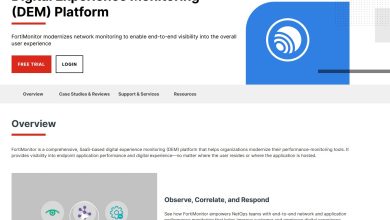
The pandemic has changed how people work, creating a new work style called the ‘new normal. Organizations need to have a thorough understanding of the organization’s business needs to come up with solutions designed to increase productivity and integrate with employees. Employee engagement plays a critical role in productivity and revenue growth, and measuring employee engagement gives you data to use in improving engagement.
Identifying the right productivity metrics to measure employee performance can help employers evaluate their overall ROI. Additionally, identifying the right metrics can give insights into employee learning and development needs. This way, you can use available resources accordingly to cater to each individual’s needs and, by extension, the company’s needs.
Let’s look at two competency areas and KPIs that can help you measure your employees’ performance!
Metrics to Track Employee Performance
Implementing strategies to improve employee engagement and performance is an excellent step for your organization. However, you have to make sure that you can track any changes in your team to gauge how effective your initiatives are.
Take a look at these metrics and performance KPIs to help improve performance:
-
Impact Of Training Sessions
The impact of training programs is an essential metric for evaluating employees’ performance at work. Ernst & Young’s (EY) new research finds that members of Gen-Z want to be the best at whatever they do and are more passionate about achieving results rather than becoming rich and famous. Consequently, many employers now incorporate training sessions as an essential employee performance metric.
How can the effectiveness of training sessions be measured?
The best way to measure the effectiveness of training sessions is to see how well employees are participating in these sessions. Greater participation shows dedication and motivation to do better at work while boosting productivity. Follow up with employees after a training session to better gauge their effectiveness.
One good performance KPI to track is the percentage of employees trained. Additionally, it’s essential to assess the knowledge accomplished through training to determine whether specific changes ought to be made or not. For this, the metric can be knowledge achieved with training.
It is also important to assess how effectively workers use the knowledge they learn during the training sessions. This can be done by comparing the performance ratings of a particular skill before and after the relevant training session. For example, the quality of work can be improved after a training session, so work quality and the impact of training sessions can be correlated and used to measure an employee’s productivity.
The right performance KPIs can help you track Objectives & Key Results to improve employee performance in your organization. What is OKR?
Objectives and Key Results(OKR) is a goal-setting framework comprising an Objective, an ambitious, memorable goal statement, and key results, or key outcomes that, when completed, will confirm that the objective has been achieved. Key results are often measured with KPIs.
We can set up OKRs to improve this attribute and measure its impact on employee performance. A sample is provided below:
Objective: Implement an impactful training program
KR1: Ensure at least 50% employees of each department have completed training for one core skill.
KR2: Achieve a percentage of exam pass rate higher than the average score percentage for the quiz taken after training
KR3: Increase the percentage of employees trained in company culture from 10% to 90%
-
Giving Employee Feedback
One of the significant indicators of a communicative environment is a dual-feedback system. As team leaders, you must be aware of the importance of giving critical feedback to your employees that can help them identify their weaknesses and strengths and work on them.
It is also essential to understand here that allowing employees to give input about a project can make them feel personally invested in their work, hence increasing their contribution to it.
Suppose your employees freely give their opinions over how your workspace is designed or how tasks are divided. In that case, that is usually a key indicator that your employee is motivated and dedicated to fulfilling their role in the workplace.
How Can It Be Measured?
For a company to achieve an ongoing feedback loop, the employee’s productivity should be evaluated by everyone they interact with. All team members, from the receptionist to an IT manager, give feedback in terms of how well the employee was able to fulfill their tasks and how well they were able to contribute to the overall environment of the company.
Here’s an example of an Objective and Key Results (OKRs) that can help measure efforts to encourage feedback in your organization:
Objective: Establish a robust feedback system within the organization
KR1: Complete 360-degree feedback for the least performing 3 departments
KR2: Mandate each employee to give 3 pieces of feedback per week
KR3: Mandate that managers provide feedback to 100% of employees each month
How Can Employees Improve From Useful Feedback?
A constructive feedback system can be beneficial if all the employees and managers are trained to give positive and critical feedback. Holding training sessions at the workplace can improve the dynamics between employers and employees and help them communicate with each other effectively.
Performance Review Comments & Phrases
Employee evaluations are usually structured as a review and a conversation. During the review, a manager might rate specific attributes or competencies that the employee needs to possess in their job. In the conversation portion of the evaluation, the manager can discuss the employee’s performance, potential, and engagement.
What the manager says in the performance review can either further engage an employee or drive them away. That means managers must remember to recognize employees for their outstanding performance and respectfully critique any lacking performance.
If an employee performed outstandingly, the manager should tailor their performance review comments to address that. Comments that praise work, and encourage similar behaviors, help show the employee they’re on the right track.
The same logic applies to areas where an employee underperformed or struggled. These conversations should be handled carefully by the manager. It’s a good idea to have some key performance review phrases on hand that gently critique the employee in a way that doesn’t harm their work ethic or engagement and instead gets them back on track.
Apart from the above, there are other top KPIs to measure Employee Engagement, like Staff turnover, Job Satisfaction, Productivity, and absenteeism.
To Conclude
Implementing the best practices to encourage and track employee engagement to boost employee performance improves the quality and productivity of work and can make a huge difference in ROI. Implementing simple strategies to increase employee engagement can have tangible results in your organization, and OKRs can help you measure these efforts and their outcomes.






